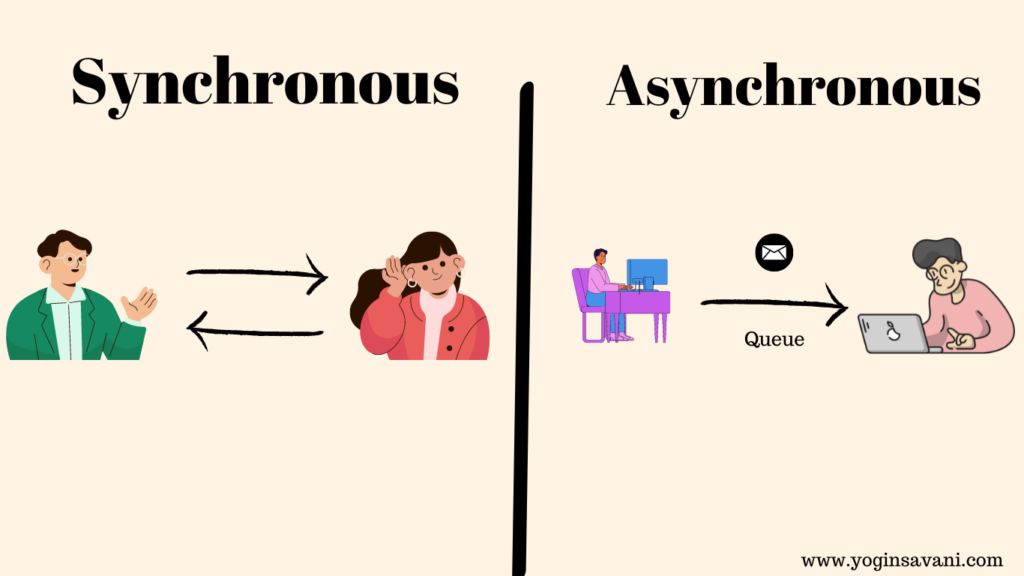
In the world of embedded systems, where efficiency and reliability are paramount, communication between different components plays a crucial role. Whether it’s coordinating tasks between microcontrollers or exchanging data between sensors and actuators, the method of communication can greatly impact the performance and functionality of the system. In this blog post, we’ll delve into two primary modes of communication: synchronous and asynchronous, exploring their differences, advantages, and use cases.
Synchronous Communication:
Synchronous communication is akin to a well-orchestrated dance, where all parties move in perfect harmony to the beat of a shared clock signal. In this mode, data transmission is tightly synchronized, with each step of the process carefully coordinated.
Key Characteristics:
- Timing Dependency: Synchronous communication relies on a central clock signal or a predetermined timing mechanism. This clock governs the pace of data transfer, ensuring that all devices involved are in lockstep.
- Deterministic: The synchronized nature of synchronous communication makes it highly predictable. Engineers can precisely analyze and design systems, knowing exactly when data will be transmitted and received.
- Simplicity: With a shared clock guiding the way, coordinating communication between components becomes more straightforward. There’s a certain elegance in the simplicity of synchronous systems.
Advantages:
- Deterministic Timing: The predictable timing of synchronous communication is ideal for real-time systems, where precise coordination is essential.
- Simplicity: The shared clock simplifies the design and implementation of communication protocols, reducing complexity.
Disadvantages:
- Sensitivity to Clock Variations: Synchronous systems are susceptible to issues like clock skew and jitter, which can introduce timing errors and degrade performance.
- Complexity in Large Systems: Achieving perfect synchronization becomes increasingly challenging as the scale of the system grows, leading to potential bottlenecks and complications.
Asynchronous Communication:
In contrast to the regimented rhythm of synchronous communication, asynchronous communication operates more like a free-flowing conversation, where each participant speaks at their own pace without waiting for a signal from the others.
Key Characteristics:
- Timing Independence: Asynchronous communication eschews the need for a shared clock signal. Instead, data is transmitted without strict timing constraints, allowing devices to operate autonomously.
- Flexibility: Without the shackles of synchronization, components can communicate at their own pace, making asynchronous systems more adaptable to varying processing speeds and dynamic environments.
- Robustness: Asynchronous communication is inherently more resilient to issues like clock skew and jitter since devices aren’t bound by a common timing reference.
Advantages:
- Flexibility: Asynchronous communication allows components to operate independently, facilitating seamless integration and accommodating variations in processing speed.
- Robustness: The absence of strict timing requirements makes asynchronous systems more tolerant of clock variations and other sources of uncertainty.
Disadvantages:
- Complexity: Implementing asynchronous communication often requires additional mechanisms, such as handshaking and buffering, to manage data transfer without a shared clock.
- Non-Deterministic Timing: The timing of data transmission in asynchronous systems is less predictable, which can pose challenges in real-time applications that require precise coordination.
Choosing the Right Mode of Communication:
The decision to use synchronous or asynchronous communication in an embedded system depends on various factors, including the system requirements, the nature of the tasks, and the hardware constraints. Real-time systems, where timing is critical, may benefit from the determinism of synchronous communication, while systems with distributed components or varying processing speeds may find the flexibility of asynchronous communication more suitable.
In conclusion, synchronous and asynchronous communication each offer unique advantages and challenges in the realm of embedded systems. By understanding the characteristics and trade-offs of these communication modes, engineers can make informed decisions when designing and implementing communication protocols, ensuring the optimal performance and reliability of their embedded systems.
Read my other blogs:
C Program to find Given Number is Prime or not.
Write a program to find Factorial Numbers of a given numbers.
Embedded C language Interview Questions.
Automotive Interview Questions
Understanding AUTOSAR Architecture: A Guide to Automotive Software Integration
Big Endian and Little Endian in Memory
Zero to Hero in C language Playlist
Embedded C Interview Questions
Subscribe my channel on Youtube: Yogin Savani
